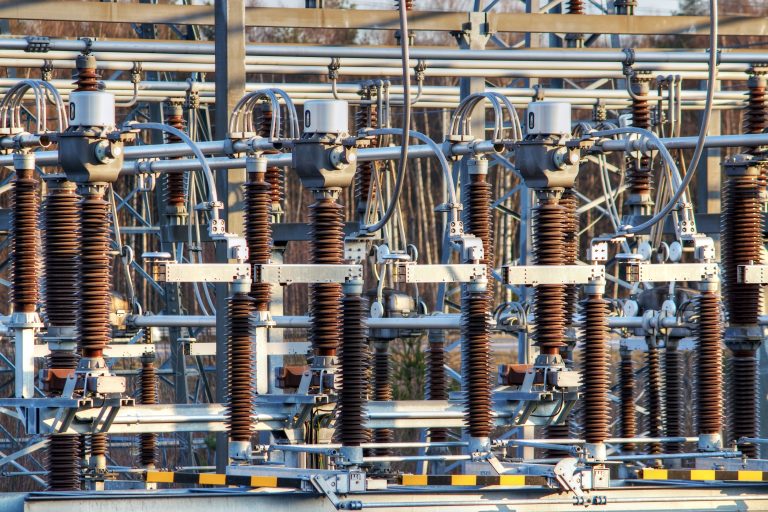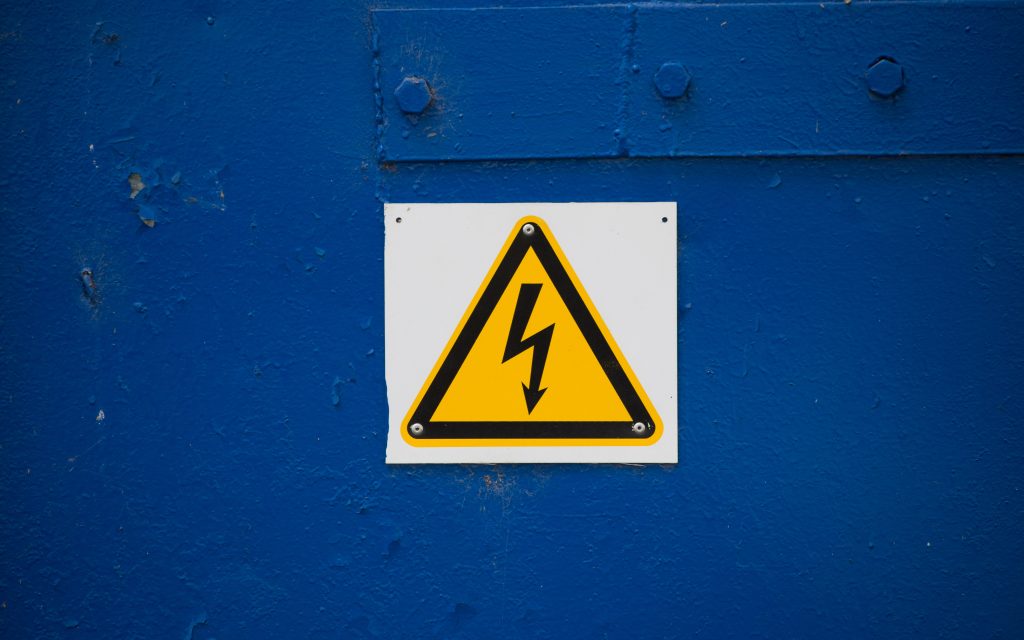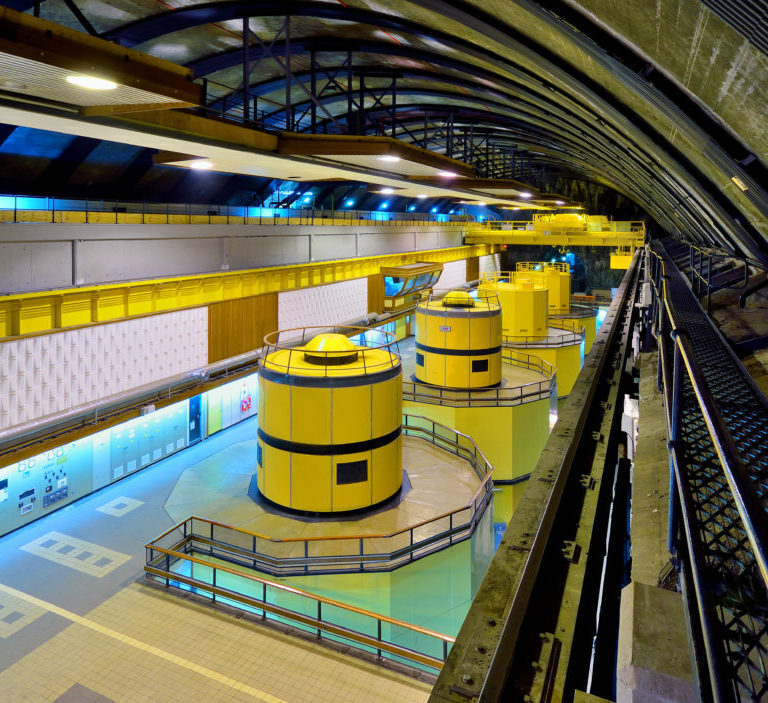In day-to-day life, the electricity system normally plays a consistent, unfluctuating role, powering the same things, in the same way. However, behind the scenes electricity generation is a constant balancing act to keep the grid stable.
Power stations themselves are like living animals, in need of continuous adjustment. Transmission networks need continual maintenance and keeping the whole grid at a frequency of 50 Hz takes careful monitoring and fine-tuning.
One of the other constant challenges for Great Britain’s electricity system is keeping voltage under control.
Keeping the volts in check
Voltage is a way of expressing the potential difference in charge between two points in an electrical field. In more simplistic terms, it acts as the pressure that pushes charged electrons (known as the current) through an electric circuit.
Great Britain’s National Grid system runs at a voltage of 400 kilovolts (kV) and 275kV (Scotland also uses 132kV). It is then reduced in a series of steps by transformers to levels suitable for supply to customers, for example 11kV for heavy industrial or 230 volts (V) when delivered to homes by regional distribution networks.

Keeping the voltage steady requires careful management. A deviation as small as 5% above or below can lead to increased wear and tear of equipment – and additional maintenance costs. Or even large-scale blackouts. Power stations such as Drax can control the voltage level through what’s known as reactive power.
“If voltage is high, absorbing reactive power back into the generator reduces it,” says Drax Lead Engineer Gary Preece. “By contrast, generating reactive power increases the voltage.”
Reactive power is made in an electricity generator alongside ‘active power’ (the electricity that powers our lights and devices) and National Grid can request generators such as Drax to either absorb or produce more of it as it’s needed to control voltage.
So how is a generator spinning at 3,000 rpm switched from producing to absorbing reactive power? All it takes is the turn of a tap.

Absorbing reactive power
Taps along a transformer allow a certain portion of the winding – which make up a transformer’s active part with the core – to be selected or unselected. This allows the transformer to alter what’s known as the ‘phase angle’, which refers to the relationship between apparent power (made up of reactive power and active power) and active power. This change in the phase angle regulates the ‘power factor’.
Power factor is measured between 0 and 1. Between 1 and 0 lagging means a generator is producing reactive power and increasing overall voltage, whereas between 1 and 0 leading means it is absorbing reactive power and reducing voltage.
That absorbed reactive power doesn’t just disappear, rather it transfers to heat at the back end of the power station’s generator. “Temperatures can be in excess of 60 degree Celsius,” says Preece. “There’s also a lot of vibration caused by the changes in flux at the end of the generator, this can cause long term damage to the winding.”
As the generators continue to produce active power while absorbing reactive power the conditions begin to reduce efficiency and, if prolonged, begin to damage the machines. Drax’s advantage here is that it operates six turbines, all of which are capable of switching between delivering or absorbing reactive power, or vice versa, in under two minutes.
Voltage management in a changing grid
The changing nature of Great Britain’s energy supply means voltage management is trickier than ever. Voltage creeps up when power lines are lightly loaded. The increase of decentralised generation – such as solar panels and small-scale onshore wind farms operating to directly supply specific localities or a number of customers embedded on regional electricity networks – means this is becoming more common around the grid. This creates a greater demand for the kind of reactive power absorption and voltage management that Drax Power Station carries out.
Grid-scale batteries are being increasingly developed as a means of storing power from weather dependent renewable sources. This power can then be pumped onto the grid when demand is high. In a similar manner, these storage systems can also absorb reactive power when there’s too much on the system and discharge it when it’s needed – bringing the voltage down and up respectively.

“The trouble is, grid-scale battery storage systems need to be absolutely huge, and a 100 MW facility would be close to the size of football field and double stacked,” explains Preece. “They are also not synchronised to the grid as a thermal turbine generator would be.” Subsequently there is no contribution to inertia.
As Great Britain’s power system continues to evolve, maintaining its stability also needs to adapt. Where once the challenge lay in keeping voltage high and enough reactive power on the grid, today it’s absorbing reactive power and keeping voltage down. It highlights the need for thermal generators that are designed to quickly switch between generating and absorbing to support the wider network.
This story is part of a series on the lesser-known electricity markets within the areas of balancing services, system support services and ancillary services. Read more about reserve power, system inertia, black start, reactive power and frequency response. View a summary at The great balancing act: what it takes to keep the power grid stable and find out what lies ahead by reading Balancing for the renewable future and Maintaining electricity grid stability during rapid decarbonisation.



















